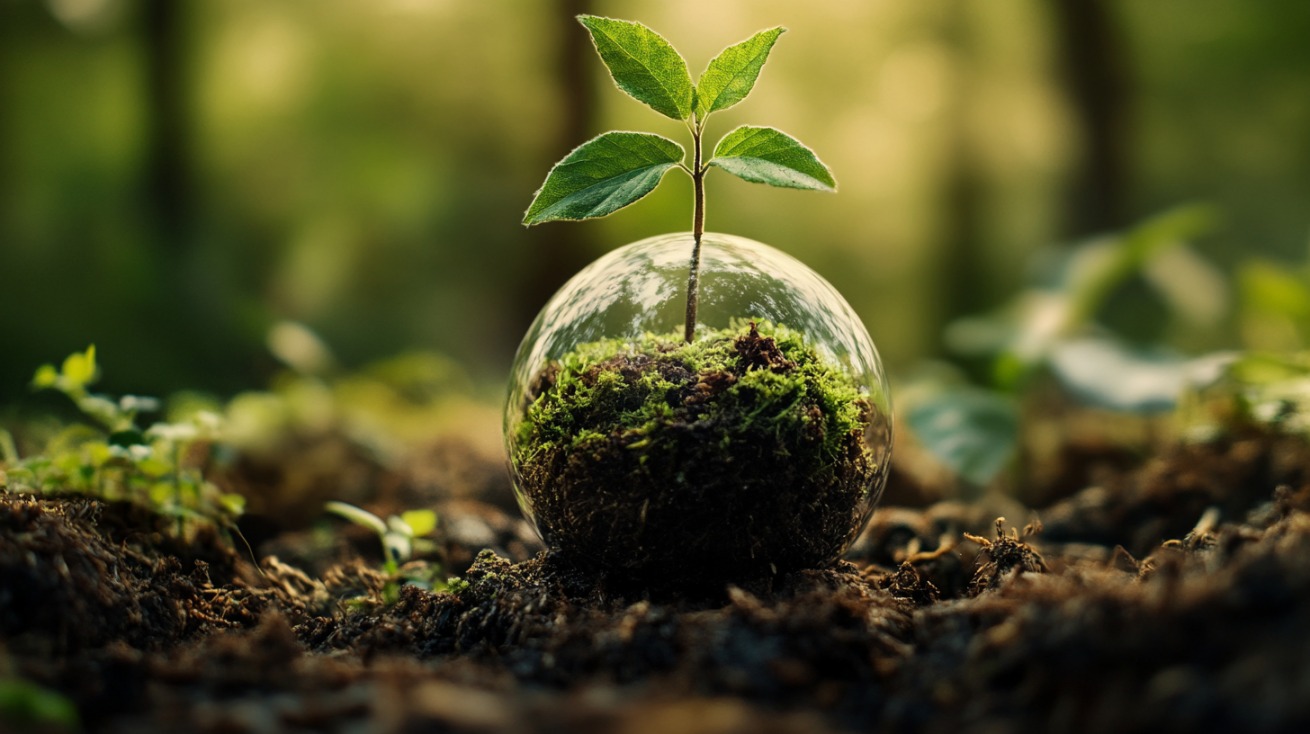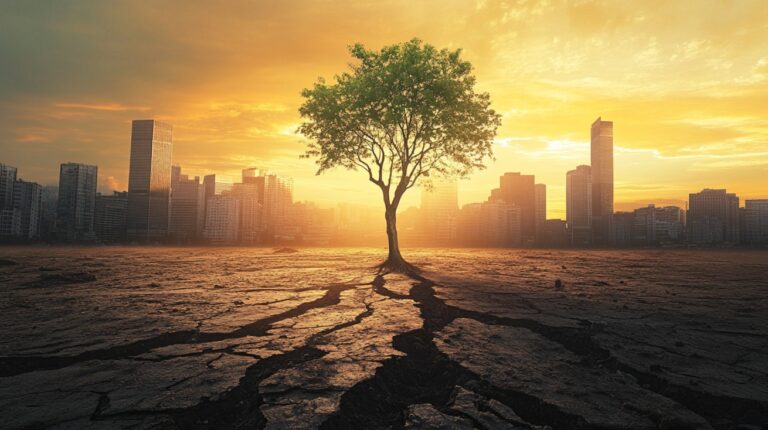Environmental sustainability faces immense pressure in today’s world. Resources are consumed faster than ecosystems can regenerate, and the consequences are becoming harder to ignore.
Biocapacity represents Earth’s ecological budget, a limit to what can be provided sustainably in terms of food, fiber, timber, and carbon absorption. Crossing that budget leads to long-term instability.
Acknowledging biocapacity and operating within its limits is essential. Humanity’s future depends on recognizing the planet’s natural boundaries.
Defining the Ecological Footprint
Ecological footprint provides a measurable way to assess how much biologically productive land and water area a population requires to support its consumption habits and manage its waste. It serves as an environmental balance sheet, comparing human demand to nature’s capacity.
Resources measured include food, fiber, timber, energy, and the land used for infrastructure and waste absorption.
Measurement spans several key categories that reflect the scope of human impact.

- Cropland: land used to grow food, animal feed, fiber, and oil crops
- Grazing land: areas needed to raise livestock for meat, dairy, leather, and wool
- Fishing grounds: water bodies required to provide fish and other seafood
- Forest products: land needed for harvesting timber and absorbing carbon emissions
- Built-up land: areas occupied by roads, buildings, and other infrastructure
- Carbon footprint: forest area required to sequester carbon dioxide emissions
Created in the early 1990s by Mathis Wackernagel and William Rees, the ecological footprint concept emerged during growing concern over unsustainable development. It brought clarity to abstract environmental issues by expressing them in spatial terms.
Offering a tangible metric, the ecological footprint reveals how far consumption patterns stretch nature’s ability to regenerate. It becomes evident when a country, city, or individual is living within or exceeding ecological means.
Ecological Deficit and Overshoot
An ecological deficit occurs when a region or population consumes more resources and produces more waste than its ecosystem can regenerate and absorb.
On a global scale, this imbalance is called ecological overshoot.
Humanity enters overshoot when collective consumption outpaces Earth’s renewable supply for a given year.
The consequences of persistent overshoot reach every continent and ecosystem.
Key effects can be summarized as follows:
| Impact | Description |
|---|---|
| Soil erosion | Reduced agricultural productivity and land degradation |
| Deforestation | Loss of tree cover, carbon sinks, and habitat for countless species |
| Ocean depletion | Collapse of fish stocks and marine food chains |
| Rising carbon levels | Intensification of climate change and extreme weather events |
| Biodiversity loss | Extinction of plant and animal species at accelerating rates |
| Climate system instability | More frequent and severe floods, droughts, and heatwaves |
Overshoot is not a future threat. It already disrupts economies, weakens public health, and increases geopolitical tension.
Every year that passes in deficit mode tightens the pressure on ecological systems.
Earth Overshoot Day or A Wake-Up Call
It’s the #EarthOvershootDay.
Humankind has already used more natural resources than our 🌏 can renew in 2019, says @EndOvershoot.Burning #fossilfuels is the largest part of our global ecological footprint.
It’s time to take #ClimateAction & #MoveTheDate👉🏾https://t.co/ZawPPMw3LI pic.twitter.com/2En65ZKNbn— UN Climate Change (@UNFCCC) July 29, 2019
Earth Overshoot Day marks a critical point in each calendar year, the moment when human demand for ecological resources exceeds what Earth can regenerate in that same year.
Once that threshold is crossed, resource use pushes into ecological debt, borrowing against the planet’s future regenerative capacity.
In 2023, Earth Overshoot Day arrived on August 2nd.
All natural resources consumed after that point, timber, crops, fish, and carbon absorption capacity, drew down reserves meant for future generations.
- Annual resource budget exhausted early: Once the global threshold is passed, every day adds to the debt.
- Ecological debt triggers depletion: Forest loss, ocean decline, soil degradation, and CO₂ buildup are direct outcomes.
- Planetary systems lack time to recover: Continuous overshoot weakens Earth’s resilience and regenerative health.
Earth Overshoot Day serves as a visual and numerical reminder of overconsumption. It is not merely symbolic, it signals real-world consequences felt in food shortages, biodiversity collapse, and climate volatility.
Historical Trends and Significance
In the early 1970s, Earth Overshoot Day landed in December, meaning consumption aligned more closely with the planet’s limits.
Over the decades, the date has steadily crept earlier. By the year 2000, it had moved to late September. Now, in recent years, it has landed in early August.
These shifts reflect more than calendar changes, they highlight intensifying pressure on ecosystems and growing extraction of natural capital. Despite technological advancement and global trade flows that temporarily buffer supply chains, biocapacity remains fixed.
- Earlier Overshoot Day = greater ecological stress
- 1970s: consumption nearly matched capacity
- 2000s: rapid increase in demand, driven by industrialization and population growth
- Current status: consumption as if there were nearly two Earths
Efforts to reverse this pattern remain fragmented. While awareness has grown, structural change has lagged behind.
Earth Overshoot Day continues to move in the wrong direction, a reflection of choices made in energy, industry, and lifestyle.
Why Biocapacity Matters for Our Future

Preserving biocapacity is not just an environmental goal, it is essential for long-term human survival.
Every major system that supports life, from agriculture and freshwater supply to energy and health, relies on stable natural conditions. Pushing ecological limits places those systems under immense strain, resulting in instability that reverberates globally.
To better understand what is at risk, it’s helpful to break down the effects of ecological overshoot and the interconnected nature of today’s environmental crises.
Impacts of Overshoot
Consequences of exceeding ecological limits are no longer distant projections, they are daily realities. Ecological overshoot has created a cascade of impacts that touch nearly every continent, industry, and household.
When demand exceeds what ecosystems can regenerate, the result is a breakdown in resource availability and climate stability. Soil degradation lowers agricultural yields. Forest loss accelerates climate disruption. Ocean acidification threatens fisheries.
- Increased atmospheric carbon levels amplify extreme temperatures, endangering health and productivity.
- Degraded ecosystems and drier climates increase wildfire frequency and intensity.
- Soil depletion and irregular weather patterns reduce agricultural reliability.
- Overdrawn aquifers and reduced snowpack limit freshwater availability.
- Habitat destruction and pollution push species toward extinction.
- Scarce resources trigger migration, competition, and geopolitical tension.
Living as if there were 1.75 Earths leads to overconsumption and ecological debt. Regeneration slows while extraction intensifies, setting the stage for long-term decline. Survival hinges on balancing consumption with what the planet can renew each year.

Interconnected Crises
Environmental problems do not exist in isolation. Energy systems, urban development, food production, and population dynamics are all connected. Addressing one challenge while ignoring others often worsens the broader situation.
For example, transitioning to electric vehicles reduces emissions, but without clean energy grids, fossil fuels still power production.
Similarly, urban expansion may solve housing shortages, but often comes at the expense of fertile agricultural land. Recognizing these links reveals the complexity of sustainability efforts.
- Fossil fuel use drives greenhouse gas emissions, triggering global warming and weather extremes.
- Industrial agriculture consumes vast land and water, while monocultures reduce soil health and biodiversity.
- Expanding cities reduce green space, increase emissions, and consume valuable farmland.
- Growing global populations increase pressure on freshwater, food, and energy supplies.
Addressing these overlapping issues requires systems thinking and coordinated action. Any serious effort to respect biocapacity must account for the way human activities interact with natural limits.
Only by recognizing these connections can society begin to shift toward sustainable living within the ecological means of the planet.
The Bottom Line
Humanity can no longer afford to exceed the planet’s biocapacity. Overshoot leads to irreversible harm, and every delay tightens the limits of future options.
Innovation, cooperation, and bold action offer hope. Cities, companies, and individuals have already begun making progress.
A livable future depends on choosing wisely, starting now.

